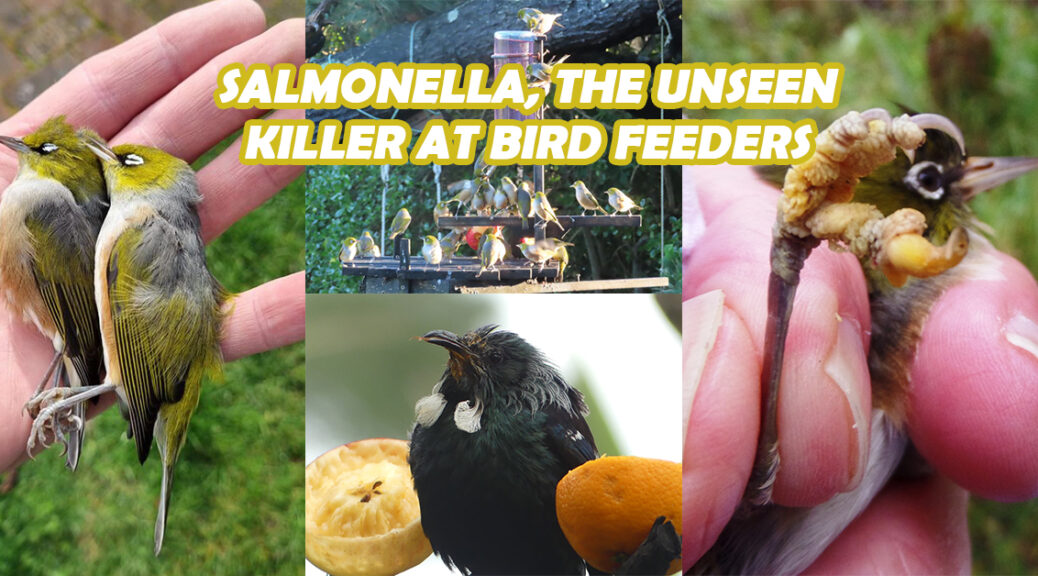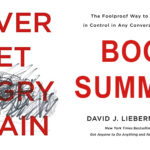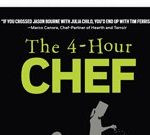
Salmonella, the Unseen Killer at Bird Feeders
Recently on social media, people have posted pictures of dead or sick birds in their garden. In one of these posts, a poster posted a picture on facebook of two apparently healthy tauhou/silvereyes found dead under an olive tree They appeared uninjured although they had fluffed up feathers. The photographer, had often found dead tauhou/silvereyes before & asked why this may have happened ? He received many replies, but very few even focused on the cause of death, the vast majority of replies advocated feeding birds. Few people, even considered that feeding birds combined with poor hygiene has likely killed these birds.
Fluffed up feathers are a common feature of birds with salmonella & diseases like chlamida. Bird poo in & around food can cause salmonella infections & intestinal parasites. Salmonella is an absolute killer of birds, but those birds affected do not drop dead around your feeder, they die unseen under bushes hundreds of metres away. To many it is an unseen problem & there is often an unawareness about the need to clean bird feeders.
Amazon #ads
Daily cleaning of bird feeders is an essential, but unfortunately daily cleaning is not a normal practice for many. A study by Josie Galbraith from the University of Auckland found that only 29% of people cleaned the feeder after 2 to 3 days of use, whilst an additional 25% cleaned it at least once a week. That leaves 46% of others not cleaning them after a week of use. As you can appreciate that is really poor stuff -can you imagine eating your dinner off the same uncleaned plate for a week !
What is clear is that bird feeding is becoming very popular & it is a large multi million dollar industry. There is a belief that feeding massive amounts of food to birds is a good thing, but is it ?
This post is not an attack on bird feeding, it is a reminder that it needs to be done in moderation & hygienically. It also provides some suggestions on good practices & offers a few alternatives.
Some quick points to note regarding bird feeding are:-
-Sugar Water Feeders should be cleaned every day with hot water & basically if you are not prepared to do that, you shouldn’t be feeding birds.
-Do not use open feeding dishes, as they rapidly (sometimes within minutes) get bird poo in them. Bird poo in the food can rapidly create a problem with both salmonella & intestinal parasites.
-Bread is absolute junk food for birds, it’s full of carbohydrates, yeast & sugars & should never be fed to them. Bread & food scraps only attracts problematic house sparrows, common mynas, feral pigeons & mallard ducks & frankly we don’t need any more of those super abundant species.
-Any bird feeding should be done in moderation. Birds are more than capable of finding their own foods & daily feeding is not required.
-Birds do not need to be fed more in winter & the winter weather in this country is not that harsh. As an example, tui, korimako/bellbird & tauhou/silvereye all live on the subantarctic Auckland Islands & survive naturally without any food from people whatsoever.
-Mass concentrations of birds around feeders cause aggression. Certain species, like sparrows, doves, pigeons, mynas & tui dominate the feeder (depending on what you are feeding), whilst the insect eating grey warblers & fantails are pushed out of your garden by these more aggressive species.
-Feed only natural foods. Tauhou/silvereye, do not scavenge the carcasses of dead animals, so why would you feed them rancid balls of fat ? Also note that commercially made energy logs & energy cakes are a made for profit human invention that are nothing like natural bird foods.
-Congregations of 10 tui or 40 tauhou/silvereye around one feeding receptacle might seem great, but it is a completely unnatural situation. It does not compare to 10 tui in a large kowhai tree taking nectar from 5,000 individual flowers. An issue with unnatural congregations of birds is that it is a sure way to increase the spread of viruses like avian pox.
-Rather than putting out bird food, plant trees, shrubs & flowers. A layered mix of ground covers, shrubs & trees in your garden can provide insects, nectar, fruit, seeds & shelter for many species of birds. These include the insect eating grey warblers, fantails, welcome swallows & shining cuckoos that are ignored & even disadvantaged by other species when you feed seed & sugar water in your garden.
-Install a bird bath in your garden. This is great for the birds, whilst it provides you an excellent opportunity to view them without the bird versus bird aggression associated with bird feeders.
Thanks for reading this post, please share it if you can. Let’s all make an effort to improve the health & diversity of our birds !
Ian McLean
Auckland Regional Representative for Birds New Zealand





